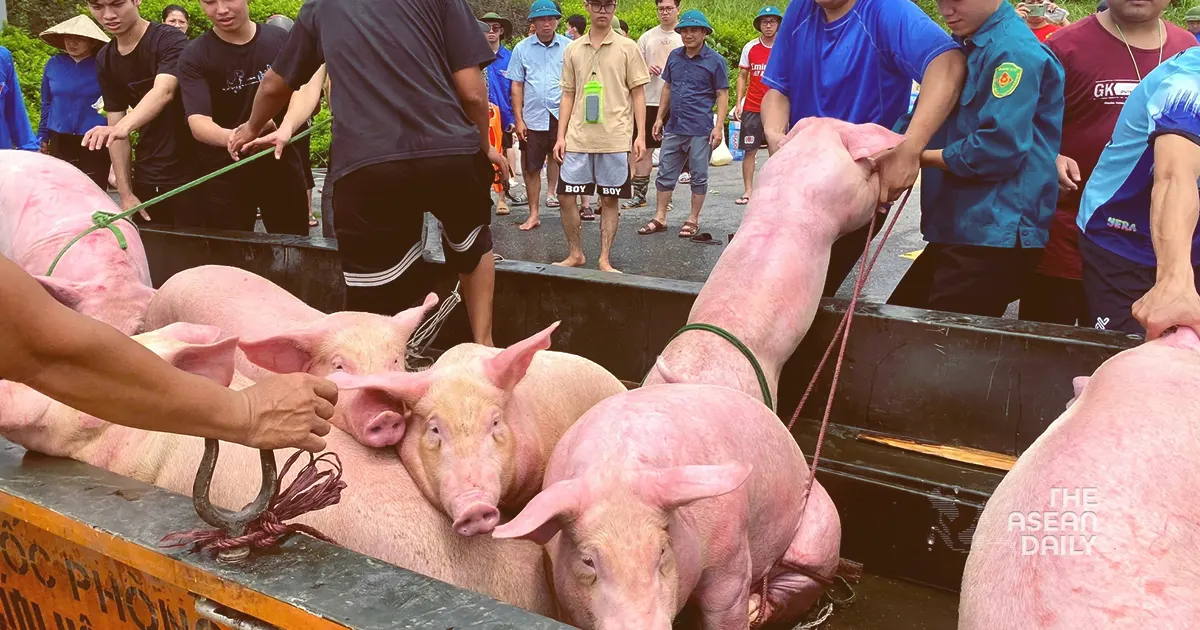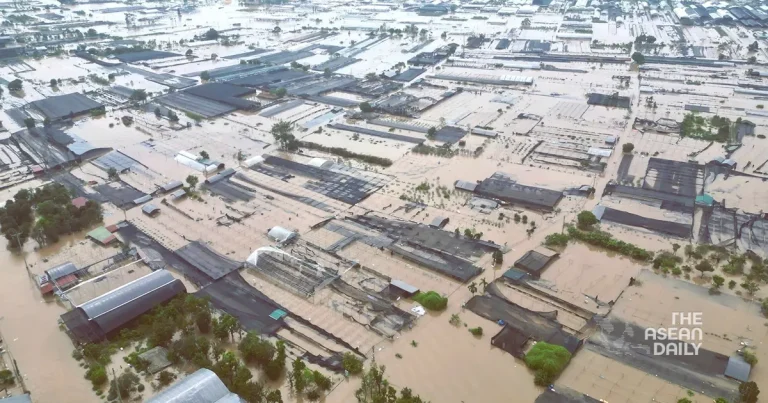12-9-2024 (HANOI) The picturesque flower and ornamental plant growing region of Van Giang district in Hung Yen province has been transformed into a waterlogged landscape following the onslaught of typhoon yagi. The night of 11 September saw a rapid rise in the Red River’s water levels, breaching the dikes and inundating three communes – Xuan Quan, Phung Cong, and Van Duc.
Aerial footage captured on 12 September revealed a stark scene: what was once a vibrant horticultural hub now lay submerged, with only rooftops and the crowns of trees visible above the murky floodwaters. The sudden onset of flooding left residents with no time to salvage their crops or livestock, resulting in catastrophic losses.
As dawn broke on 12 September, desperate attempts to rescue larger trees and animals were underway. Some households resorted to hiring cranes or using boats to save what they could, including operations to rescue thousands of pigs from submerged farms.

The human toll of this natural disaster is palpable. Truong Thi Nga, a 55-year-old resident of Phung Cong commune, lamented the unprecedented scale of destruction. “In over four decades of cultivating flowers and ornamental plants, we’ve never faced such devastation,” she said. Nga estimates potential losses of 5 to 7 billion VND (S$265,000 to S$372,000) if the floodwaters persist for weeks, effectively wiping out her family’s entire livelihood.
The nighttime deluge caught many off guard, leaving them helpless to protect their investments. Nguyen Van Tac, another Phung Cong commune resident, managed to save only about 100 of his thousand-plus ornamental plants. He grimly predicts a loss of around 100 million VND if the waters don’t recede within three days.
The disaster has fostered a sense of community amidst the chaos. Tac described how locals, upon hearing of the plight of pig farmers, banded together to assist in rescuing the animals. “Some households have thousands of pigs. We’ve seen pigpens flooded to their roofs, with pigs swimming about all night. We’re now searching for them, trying to bring them to shore,” he explained.




